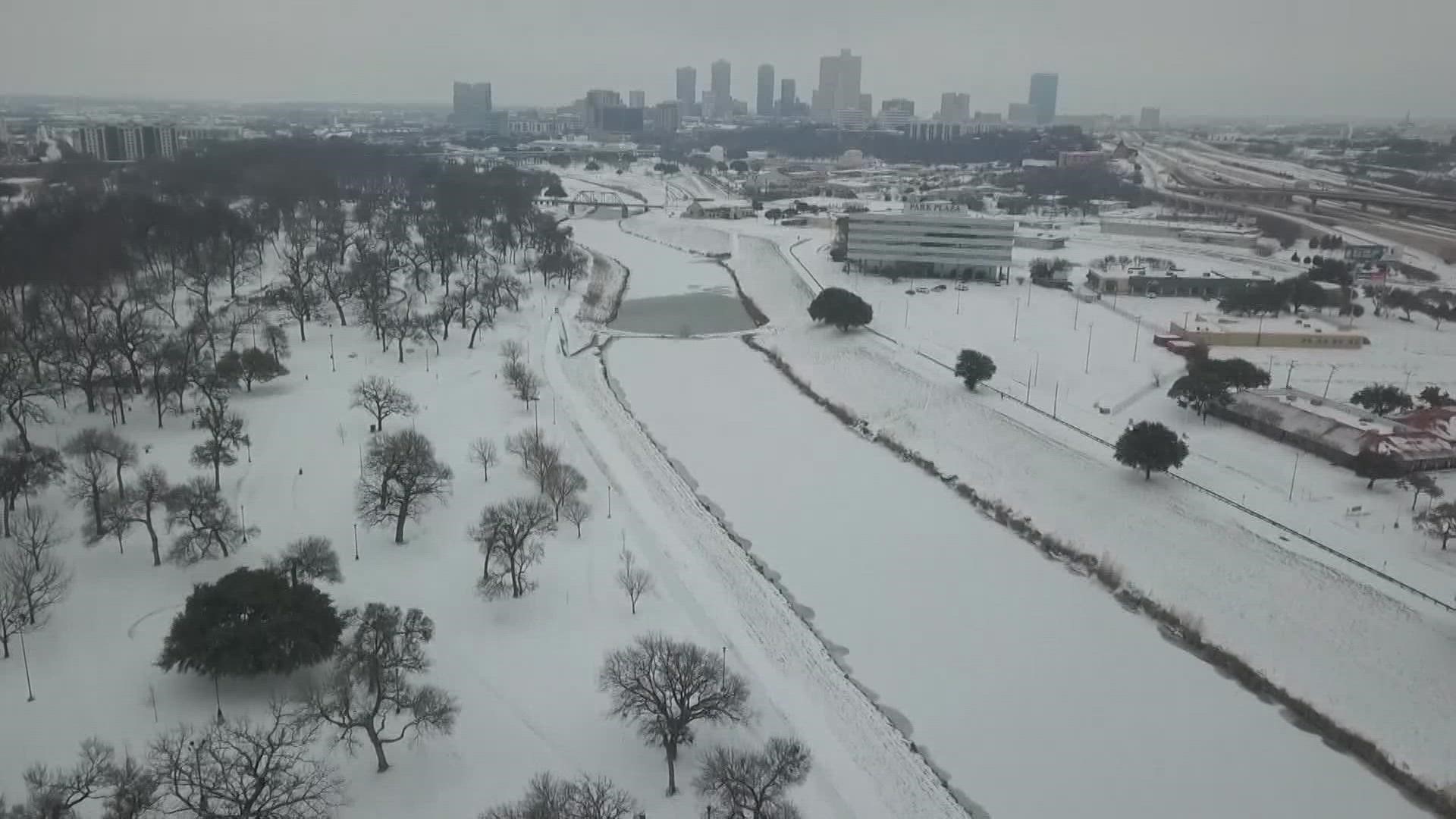DALLAS — You can hardly watch TV without seeing commercials for insurance companies. It’s an industry that pours money into advertising. But you know what has the potential to be really expensive for them?
Climate change.
The National Oceanic and Atmospheric Administration, also known as NOAA, says “climate change is increasing the frequency of some types of extremes…”
And looking at last year's extremes, NOAA says there were 20 large-scale "weather and climate" disasters in the U.S. with combined losses of $145 billion.
That includes the Texas’ February storm, with insurance companies currently expected to pay out $10.3 billion, a disaster that emerging science suggests was made worse by climate change.
Texas was not prepared.
People who could afford it the least suffered the most, like Kathey Sauels in Dallas. When a water pipe burst in her apartment it caused the bedroom ceiling to collapse.
“I shocked to see that ceiling. With so much water. I couldn’t do anything but run. Everything in my bedroom was destroyed. I couldn't save anything,” Sauels said.
After the Texas storm, Sauels spent a month in her apartment waiting for repairs. Like many Texans, she's concerned it might all happen again.
“I'm worried about the cold weather now. I don't know if my house is safe,” she said.
Planning for yesterday
People expect their insurance will be there for them when they need it. So, when it comes to the increasing threats of climate-driven disasters, many states make sure insurance companies prove they can weather any financial storm.
Texas does not.
Gov. Greg Abbott's administration has no policy to address the risk climate change poses to the insurance policies you pay for, month after month.
“The Texas cold snap and the disaster that followed was preventable if the oil and gas industry and the power sector had weatherized their systems. That is similar to the situation in insurance,” said Dr. Michael Wara, an expert in climate policy at Stanford University.
Wara says Texas' refusal to address the well-documented threats of climate change puts insurance customers at risk.
“That's going to mean that when disaster strikes, which is more likely to happen because of climate change, we're not ready,” he said.
Wara says, when it comes to fires, floods and hurricanes, insurance companies use decades of historical data about all the claims they've paid out to predict how many disasters there will be in the future and how much they'll cost.
“What climate change does is mess up that approach to pricing because climate change makes the future different than the past,” Wara said.
California is seeing the future.
As a result of more intense wildfires, Merced Insurance recently went bankrupt in 2018, unable to pay far more for fire claims than anticipated. And tens of thousands of California homeowners in fire prone areas have been dropped by insurance carriers.
Planning for tomorrow
If the future won't look like the past, what will it look like?
That's where computer models come in. Some states require that insurance companies use sophisticated predictive modeling to create a picture of how many disasters they'll see and how much they'll cost.
Florida, for example, has a state commission of experts that oversee the methodology of computer models.
And in Washington State, insurance commissioner Mike Kreidler regularly reviews how insurance companies use their modeling predictions.
But if insurance companies are already using these models, why does a state insurance regulator need to be involved, too?
“Ask the people that were setting up the electrical grid in Texas why they did what they did? Because they there were some financial advantages at the time,” Kreidler said.
“We understand that some insurance companies will play fast and loose. We can't afford to have somebody that comes in to make a buck today but leave the market tomorrow,” he said.
Insuring the insurers
You might not realize it, but your insurance company has an insurance company. That industry is called reinsurance and it covers the really big losses. For example, of the $10.3 billion in damages from the Texas winter storm, reinsurance companies will cover $3 billion.
“They offer lots of coverage for these very unlikely things. And in any given year, one in 100 of those things come true and they have to pay. If they're paying for three or four things coming true, that's not a business model anymore. The reinsurers basically want a fair game,” Wara said.
And they don't think they're getting one in Texas.
Last December, the Reinsurance Association of America urged Texas Insurance Commissioner Cassie Brown, appointed by Gov. Abbott, to "adopt guiding principles... to address the issue of climate change and its interrelationship with insurance and regulation."
So, where does the Abbott administration stand on that?
We asked if the Texas Department of Insurance has a policy about climate change and how it impacts the department's mission? The answer was no.
So, how does TDI make sure that insurance companies have sufficient plans to mitigate the risks they face from climate change. Notably, the department answered the question without ever saying the words "climate change."
They wrote, “One of TDI’s core functions is monitoring insurer solvency, to ensure that companies have the ability to pay claims and be a stable force in the marketplace. Part of that monitoring involves evaluating the various regulatory filings insurers provide TDI to highlight the risks to which the insurer is exposed and how they are managing those risks.”
Conclusion
Weather and climate disasters can have huge impacts on people's lives and science is telling us to expect more of them. But instead of planning for a more expensive tomorrow, Texas is still planning for a cheaper yesterday.
That philosophy proved to be a disaster last February and could be again.

